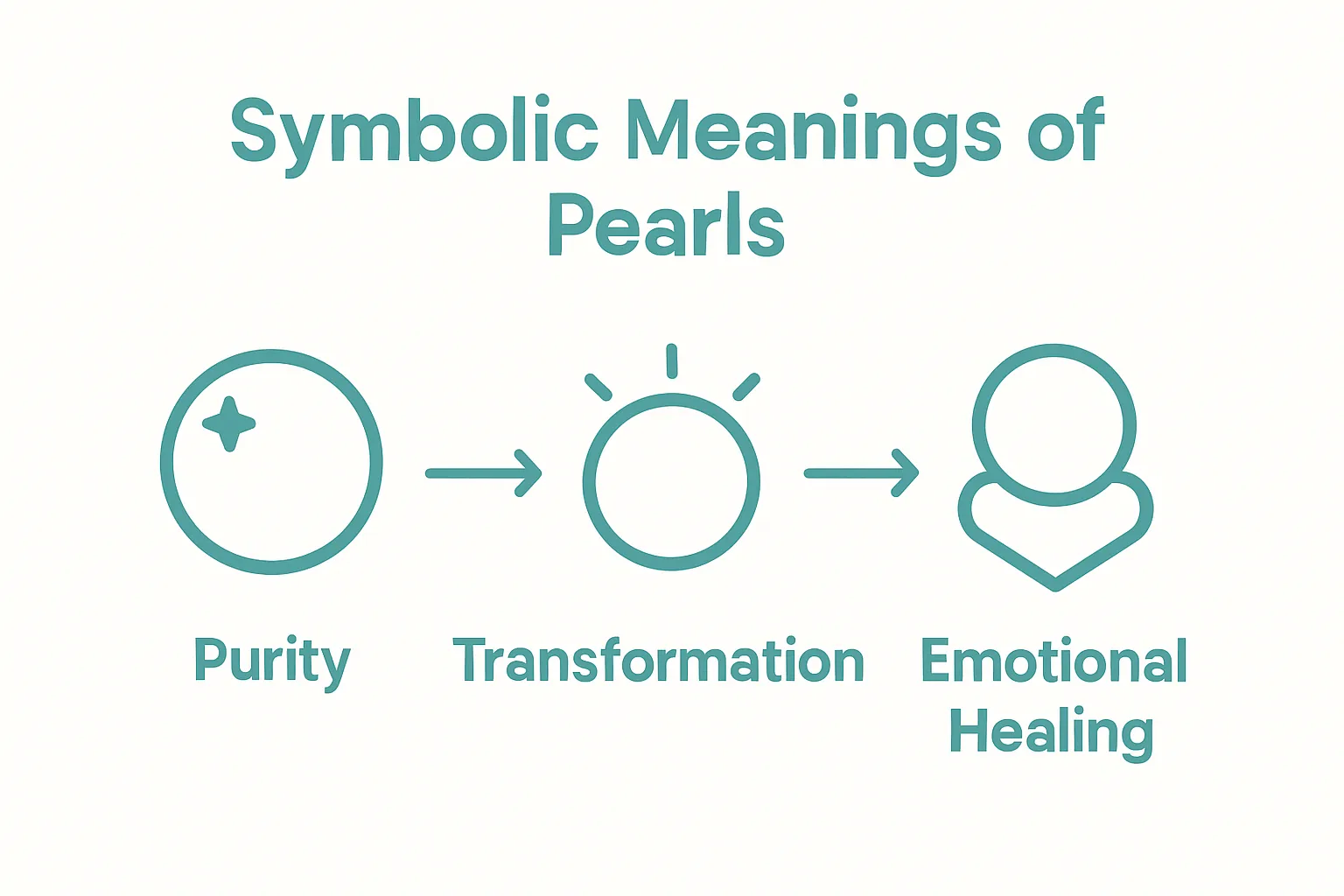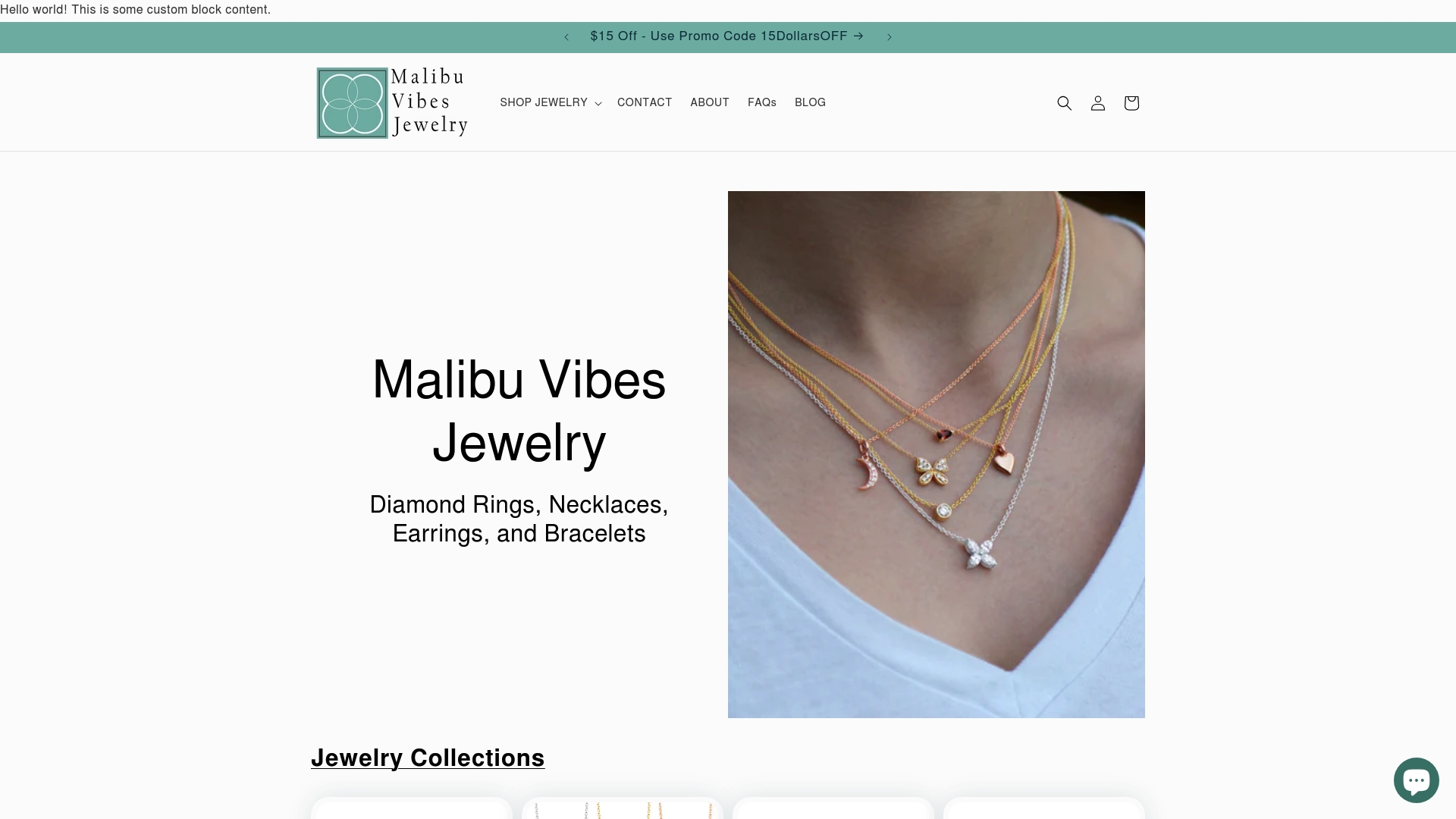Pearl jewelry stands out as a rare natural marvel, born inside living creatures rather than dug up from the earth. Most gemstones require cutting and polishing, but pearls form perfectly smooth and glowing straight from an oyster or mussel. Here is a wild fact—it can take up to seven years for a single pearl to form inside its shell. Yet for all the patience and mystery behind their origin, the story of pearls goes far beyond how they are made. Their origins, symbolism, and global meaning turn a simple bead into something unforgettable.
Table of Contents
- Defining Pearl Jewelry: What It Is
- The Symbolism Behind Pearls: Why They Matter
- Cultural Significance of Pearls: A Global Perspective
- Choosing Pearl Jewelry: Key Concepts and Considerations
- The Craftsmanship of Pearls: How They Are Made
Quick Summary
| Takeaway | Explanation |
|---|---|
| Pearls Are Unique Gemstones | Pearls are created by mollusks through a natural process, distinct from traditional gemstones. |
| Pearls Symbolize Various Values | They represent purity, transformation, and emotional healing across different cultures. |
| Evaluate Quality When Choosing Pearls | Consider luster, surface perfection, shape, and color to ensure you select quality pearl jewelry. |
| Pearls Hold Cultural Significance | Different civilizations view pearls as symbols of status, wisdom, and beauty, making them rich with meaning. |
| Understanding Pearl Production Is Important | Knowledge of natural and cultivated methods enhances appreciation of pearls as fine jewelry. |
Defining Pearl Jewelry: What It Is
Pearl jewelry represents a timeless and elegant form of adornment crafted using pearls, unique gemstones formed entirely within living organisms. Unlike other gemstones mined from the earth, pearls are created through a fascinating biological process where mollusks like oysters and mussels generate these luminescent treasures. Learn more about fine jewelry craftsmanship to understand how these exquisite pieces are created.
The Biological Origin of Pearls
Pearls emerge through a remarkable natural defense mechanism. When an irritant like a grain of sand enters a mollusk’s shell, the creature responds by secreting layers of nacre, a smooth, iridescent substance that gradually builds up around the foreign object. This process can take several years, resulting in the formation of a pearl with a unique luster and character. According to National Geographic’s marine research, this natural phenomenon transforms an unwelcome intrusion into a beautiful gemstone.
Types of Pearl Jewelry
Pearl jewelry encompasses a wide range of accessories, each showcasing the gem’s inherent beauty. These include:
- Classic pearl necklaces that drape elegantly around the neck
- Delicate pearl stud earrings for understated sophistication
- Intricate pearl bracelets that add a touch of refinement
- Statement pearl rings that capture attention
Whether cultivated through careful aquaculture or discovered in rare natural settings, pearls represent more than mere accessories. They embody a unique intersection of natural wonder and human craftsmanship, transforming an organic process into wearable art that has captivated cultures worldwide for centuries.
The Symbolism Behind Pearls: Why They Matter
Pearls transcend their physical beauty, embodying deep cultural and emotional significance across civilizations. These luminescent gems have long represented profound symbolic meanings, ranging from purity and wisdom to transformation and emotional healing. Learn more about the meaning behind different gemstones to understand the deeper narratives behind precious stones.
Cultural Significance of Pearls
Throughout history, pearls have been revered as more than mere decorative objects. According to UNESCO’s cultural heritage research, different cultures have attributed unique symbolic interpretations to these extraordinary gems. In ancient Chinese traditions, pearls symbolized wisdom and were considered gifts from dragons. European royalty viewed them as emblems of social status and refinement, often adorning crowns and ceremonial garments.
Emotional and Personal Symbolism
Pearls carry profound personal symbolism that resonates with individual emotional journeys. They are often associated with several powerful metaphorical representations
 :
:
- Purity: Representing innocence and sincerity
- Transformation: Symbolizing personal growth emerging from challenging experiences
- Emotional Healing: Signifying inner peace and emotional balance
In many cultures, pearls are gifted during significant life transitions like weddings, graduations, and milestone birthdays, underscoring their role as more than decorative accessories. They serve as powerful talismans, embodying hope, resilience, and personal evolution through their unique formation process.
To help visualize traditional meanings attributed to pearls in different cultures and contexts, the following table summarizes the major symbolic interpretations discussed.
| Symbolic Meaning | Description | Traditions/Cultures |
|---|---|---|
| Purity | Represents innocence, sincerity, and spiritual clarity | Many cultures, including weddings worldwide |
| Wisdom | Symbolizes knowledge and insight | Ancient China, Native American |
| Transformation | Embodies personal growth and overcoming adversity | Individuals experiencing life milestones |
| Emotional Healing | Signifies inner peace and emotional balance | Broad spiritual and personal contexts |
| Perfection | Associated with enlightenment and harmony | Japanese traditions |
| Status/Wealth | Indicates high social standing and refinement | European royalty, historical societies |
Cultural Significance of Pearls: A Global Perspective
Pearls have woven themselves into the cultural fabric of societies worldwide, representing far more than simple decorative accessories. Their rich historical significance spans continents, reflecting complex social, spiritual, and economic narratives. Explore statement jewelry and its cultural impact to understand how jewelry communicates deeper meanings across different cultures.
Regional Pearl Symbolism
Different global cultures have interpreted pearls through unique cultural lenses. According to Smithsonian Anthropological Research, these luminescent gems carry profound meanings that extend beyond aesthetic value. In Japanese culture, pearls symbolize perfection and enlightenment, while Native American traditions view them as sacred objects representing wisdom and spiritual connection.
Economic and Social Significance
Pearls have historically functioned as more than mere ornamental items, serving critical economic and social roles across civilizations. Their significance can be understood through several key dimensions:
- Trade Currency: Pearls were valuable exchange commodities in ancient maritime trade routes
- Social Stratification: Ownership of pearls often indicated wealth and social standing
- Diplomatic Gifts: Royal courts used pearl jewelry as sophisticated diplomatic instruments
Beyond material value, pearls represent a universal language of beauty that transcends geographic and cultural boundaries. They embody human creativity, resilience, and the remarkable capacity to transform challenging experiences into something extraordinary, much like the pearl itself emerges from an oyster’s defensive response to an irritant.
Choosing Pearl Jewelry: Key Concepts and Considerations
Selecting the perfect pearl jewelry requires understanding nuanced characteristics that define their quality, beauty, and value. Beyond aesthetic appeal, discerning buyers evaluate multiple complex factors to ensure they invest in truly exceptional pieces. Explore different necklace styles to complement your pearl jewelry to enhance your overall accessorizing strategy.
Evaluating Pearl Quality
Pearl quality assessment involves examining several critical attributes that determine their intrinsic value. According to Gemological Institute of America’s expert research, these key evaluation metrics include luster, surface quality, shape, color, and size. Exceptional pearls demonstrate a high-quality nacre with deep, reflective luster, minimal surface imperfections, and consistent, symmetrical shapes.
To clarify the key factors that determine the value and beauty of pearls, here is a summary table of essential pearl quality evaluation criteria.
| Quality Factor | Description |
|---|---|
| Luster | The pearl’s reflective quality and inner shine, indicating high-quality nacre. |
| Surface Perfection | The smoothness of the pearl’s surface, with fewer blemishes indicating higher quality. |
| Shape Consistency | The overall roundness and symmetry of the pearl. |
| Color Nuance | The natural color variations and overtones that impact appearance and personal taste. |
| Size | The diameter of the pearl, with larger pearls generally considered more valuable. |
Essential Selection Criteria
When choosing pearl jewelry, potential buyers should consider multiple dimensions that contribute to overall quality and personal aesthetic preferences:
- Luster: The most critical factor, representing the pearl’s reflective quality and inner glow
- Surface Perfection: Evaluating blemishes, spots, and overall smoothness
- Shape Consistency: Determining roundness, symmetry, and uniformity
- Color Nuance: Understanding natural color variations and personal style alignment
Beyond technical specifications, pearl jewelry selection remains a deeply personal journey. The right piece should not only meet objective quality standards but also resonate with the wearer’s individual style, emotional connection, and aesthetic sensibilities.
The Craftsmanship of Pearls: How They Are Made
Pearl creation represents a remarkable intersection of natural biological processes and human intervention, transforming a microscopic irritant into a luminescent gem through an extraordinary journey. Learn more about artisan jewelry craftsmanship to understand the intricate techniques behind creating exquisite jewelry pieces.
Natural Pearl Formation
In the wild, pearl formation begins when an external substance like a grain of sand accidentally enters a mollusk’s shell. According to Oceanographic Research Institute, the mollusk responds defensively by secreting nacre, a smooth crystalline substance, which gradually envelops the irritant. This process can take between two to seven years, with the mollusk continuously depositing thin layers of nacre around the foreign object, ultimately creating a pearl.
Cultivated Pearl Production
Modern pearl production involves sophisticated techniques that replicate and accelerate natural processes. Pearl farmers deliberately introduce a carefully selected nucleus into oysters, triggering the nacre production mechanism. This method allows for more controlled and predictable pearl development:
- Nucleus Insertion: Introducing a small spherical piece of mantle tissue
- Controlled Environment: Maintaining optimal water temperature and conditions
- Precise Monitoring: Regular assessment of oyster health and pearl development
The craftsmanship of pearl production blends scientific precision with patient observation, transforming a biological defense mechanism into a process of creating extraordinary, luminescent gems that capture light and imagination.

Discover the Deeper Meaning of Pearl Jewelry with Malibu Vibes Jewelry
If understanding the symbolism and emotional power behind pearl jewelry spoke to you, you are not alone. Many people seek more than just a beautiful accessory. They want jewelry that represents purity, transformation, and personal milestones—just like the pearls discussed in this article. But finding finely crafted pieces that truly capture these meanings can feel overwhelming, especially if you want both elegance and quality.
Explore our Bezel Jewelry collection designed to highlight the timeless beauty that pearls embody. Each piece is handcrafted with attention to detail, making it perfect for marking a special occasion or celebrating your unique journey.

Take the next step toward meaningful adornment. Visit Malibu Vibes Jewelry to discover jewelry crafted with purpose and heart. Shop today for quality you can see and stories you can wear. Your next cherished piece is waiting.
Frequently Asked Questions
What is pearl jewelry made of?
Pearl jewelry is crafted using pearls, unique gemstones formed by mollusks like oysters and mussels through a natural process involving the secretion of nacre around irritants.
What types of pearl jewelry are available?
Pearl jewelry includes a variety of accessories such as classic pearl necklaces, delicate pearl stud earrings, intricate pearl bracelets, and statement pearl rings, each showcasing the beauty of pearls.
What does the symbolism of pearls represent?
Pearls symbolize several meanings, including purity, wisdom, transformation, and emotional healing, making them powerful gifts during significant life events such as weddings and graduations.
How is a pearl formed?
A pearl is formed when an irritant like a grain of sand invades a mollusk’s shell, prompting the creature to secrete layers of nacre around the irritant, gradually creating a pearl over several years.
Recommended
- The Meaning of Different Gemstones – A Guide to Choosing Intentional J – Malibu Vibes Jewelry
- Understanding the History of Jewelry Design and Its Impact – Malibu Vibes Jewelry
- What is Fine Jewelry? Understanding Luxury and Craftsmanship – Malibu Vibes Jewelry
- 6 Types of Necklaces for Women to Elevate Your Style – Malibu Vibes Jewelry



